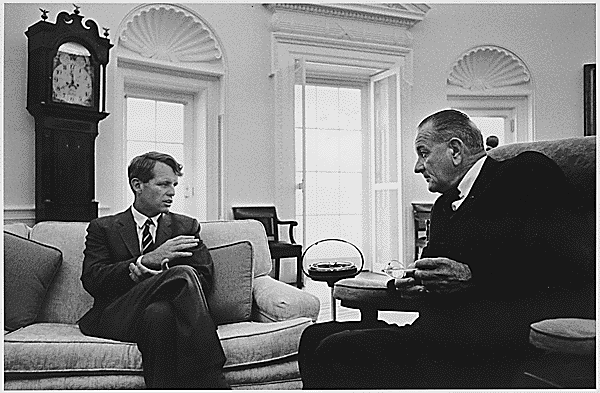There’s a terrific post on John Huston over at Cinephilia and Beyond, which has quickly become one of my favorite all-time sites. They give us a 1965 interview with Huston in Film Quarterly. Dig this:
Huston: Actually I don’t separate the elements of film-making in such an abstract manner. For example, the directing of a film, to me, is simply an extension of the process of writing. It’s the process of rendering the thing you have written. You’re still writing when you’re directing. Of course you’re not composing words, but a gesture, the way you make somebody raise his eyes or shake his head is also writing for films. Nor can I answer precisely what the relative importance, to me, of the various aspects of film-making is, I mean, whether I pay more attention to writing, directing, editing, or what-have-you. The most important element to me is always the idea that I’m trying to express, and everything technical is only a method to make the idea into clear form.
I’m always working on the idea: whether I am writing, directing, choosing music or cutting. Everything must revert back to the idea; when it gets away from the idea it becomes a labyrinth of rococo. Occasionally one tends to forget the idea, but I have always had reason to regret this whenever it happened. Sometimes you fall in love with a shot, for example. Maybe it is a tour de force as a shot. This is one of the great dangers of directing: to let the camera take over. Audiences very often do not understand this danger, and it is not unusual that camerawork is appreciated in cases where it really has no business in the film, simply because it is decorative or in itself exhibitionistic.
I would say that there are maybe half a dozen directors who really know their camera-how to move their camera. It’s a pity that critics often do not appreciate this. On the other hand I think it’s OK that audiences should not be aware of this. In fact, when the camera is in motion, in the best-directed scenes, the audiences should not be aware of what the camera is doing. They should be following the action and the road of the idea so closely, that they shouldn’t be aware of what’s going on technically.
Here’s more on Huston’s approach to storytelling from his autobiography: An Open Book:
I read without discipline, averaging three to four books a week, and have since I was a kid. Gram used to read aloud to me books by her favorite authors: Dickens, Tolstoy, Marie Carelli. She also read speeches from Shakespeare to me, and had me repeat them to her. When I was in my early teens, we’d talk about the “style” of an author. I puzzled over the meaning of the word. Was an author’s style his way of arranging words to set himself apart from other writers? An invention, so to speak? Surely there was more to style than that! One day it came to me like a revelation: people write differently because they think differently. An original idea demands a unique approach. So that style isn’t simply a concoction of the writer, but simply the expression of a central idea.
I’m not aware of myself as a director having a style. I’m told that I do, but I don’t recognize it. I see no remote similarity, for example, between The Red Badge of Courage and Moulin Rouge. However observant the critic, I don’t think he’d be able to tell that the same director made them both. Bergman has a style that’s unmistakably his. He is a prime example of the auteur approach to making pictures. I suppose it is the best approach: the director conceives the idea, writes it, puts it on film. Because he is creating out of himself, controlling all aspects of the work, his films assume a unity and a direction. I admire directors like Bergman, Fellini, Buñuel, whose every picture is in some way connected with their private lives, but that’s never been my approach. I’m eclectic. I like to draw on sources other than myself; further, I don’t think of myself as simply, uniquely and forever a director of motion pictures. It is something for which I have a certain talent, and a profession the disciplines of which I have mastered over the years, but I also have a certain talent for other things, and I have worked at those disciplines as well. The idea of devoting myself to a single pursuit in life is unthinkable to me. My interests in boxing, writing, painting, horses have at certain periods in my life been every bit as important as that in directing films.
I have been speaking of style, but before there can be style, there must be grammar. There is, in fact, a grammar to picture-making. The laws are as inexorable as they are in language, and are to be found in the shots themselves. When do we fade-in or fade-out with a camera? When do we dissolve, pan, dolly, cut? The rules governing these techniques are well grounded. They must, of course, be disavowed and disobeyed from time to time, but one must be aware of their existence, for motion pictures have a great deal in common with our own physiological and psychological processes—more so than any other medium. It is almost as if there were a reel of film behind our eyes . . . as though our very thoughts were projected onto the screen.
Motion pictures, however, are governed by a time sense different from that of real life; different from the theater, too. That rectangle of light up there with the shadows on it demands one’s whole attention. And what it furnishes must satisfy that demand. When we are sitting in a room in a house, there is no single claim on our awareness. Our attention jumps from object to object, drifts in and out of the room. We listen to sounds coming from various points; we may even smell something cooking. In a motion-picture theater, where our undivided attention is given to the screen, time actually moves more slowly, and action has to be speeded up. Furthermore, whatever action takes place on that screen must not violate our sense of the appropriate. We accomplish this by adhering to the proper grammar of film-making.
For example, a fade-in or a fade-out is akin to waking up or going to sleep. The dissolve indicates either a lapse of time or a change of place. Or it can, in certain circumstances, indicate that things in different places are happening at the same time. In any case, the images impinge . . . the way dreams proceed, or like the faces you can see when you close your eyes. When we pan, the camera turns from right to left, or vice versa, and serves one of two purposes: it follows an individual, or it informs the viewer of the geography of the scene. You pan from one object to another in order to establish their spatial relationship; thereafter you cut. We are forever cutting in real life. Look from one object to another across the room. Notice how you involuntarily blink. That’s a cut. You know what the spatial relationship is, there’s nothing to discover about the geography, so you cut with your eyelids. The dolly is when the camera doesn’t simply turn on its axis but moves horizontally or backward and forward. It may move closer to intensify interest and pull away to come to a tableau, thereby putting a finish—or a period—to a scene. A more common purpose is simply to include another figure in the frame.
The camera usually identifies itself with one of actors in a scene, and it sees the others through his eyes. The nature of the scene determines how close the actors are to each other. If it’s an intimate scene, obviously you don’t show the other individual as a full-length figure. The image on the screen should correspond to what we experience in real life. Seated a few feet apart, the upper body of one or the other would fill the scene. Inches apart would be a big-head close-up. The size of their images must be in accordance with the proper spatial relationship. Unless there’s a reason: when actors are some distance apart and the effect of what one is saying has a significant impact upon the person he’s talking to, you might go into a close-up of the listener. But still his distance, as he views the person who is speaking, must remain the same. Going into a big-head close-up with dialogue that is neither intimate nor significant serves only to over-emphasize the physiognomy of the actor.
Usually the camera is in one of two positions: “standing up” or “sitting down.” When we vary this, it should be to serve a purpose. Shooting up at an individual ennobles him. As children we looked up to our parents, or we look up at a monumental sculpture. On the other hand, when we look down, it’s at someone weaker than we are, someone to laugh at, pity or feel superior to. As the camera goes higher and higher looking downward, it becomes God-like.
The conventional film-maker usually shoots a scene in full shot—a master scene—followed by medium shots, close shots and close-ups . . . at various angles . . . then decides in the cutting room what to use. The opposite way is to find the one shot that serves as an introduction to a scene; the rest will follow naturally. Again there’s a grammar to it. Once you write your first declarative sentence, the narration flows. Understanding the syntax of a scene implies that you already know the way the scene will be cut together, so you shoot only what’s required. That’s called “cutting with the camera.”
I work closely with the cameraman and with the operator, the man who actually manipulates the camera. He looks through the lens, executing what you’ve specified. At the end of a shot you look to him to see if he’s brought it off. The camera is sometimes required to take part in a sort of a dance with the artists, and its movements timed as if they were to music, and I’ve noticed that most good operators have a natural sense of rhythm. They usually dance well, play drums, juggle or do something that requires good timing and balance.
Cameramen—most of them ex-operators—are really lighting experts. They like to be known not as cameramen but as directors of lighting. Young directors are, as a rule, somewhat frightened of their cameramen. This is understandable, for cameramen often proceed in an independent fashion to light each scene precisely as they please. Lighting is their first interest, since other cameramen will judge them by it.
As an actor, it’s been my opportunity to observe the working methods of other directors. For the most part, they go by the book. Inexperienced directors put great stock in the master scene—which is shot as though all the actors were on a stage; you see everybody at once, and all the action. Their idea is that if they’ve missed something in the closer work with the camera that they should see, they can always fall back to the master shot. They think of it as a way of protecting themselves. I’ve often heard cameramen advise such a procedure, but a cameraman is not a cutter. The fact that falling back to the master scene interrupts the flow of the whole scene and breaks whatever spell has been evoked through good close-up work is of no concern to him. Obviously I am not speaking about all cameramen. There are any number of outstanding professionals who are just as concerned with getting that ideal sequence of shots—whatever the cost—as any director.
So many things can go wrong while filming a scene. If only everything bad that’s going to happen would happen at once and be over with! You’re seldom that fortunate. Instead, it’s the camera, or an actor forgetting his lines, or the sound of an airplane, or a car backfiring, or an arc light that flickers. When things of this kind occur, you simply have to start again. It can drive a director up the wall. I recall an incident involving one especially volatile director who was making a film in Africa. During one take a native baby began crying, and that stopped the scene. He started over, and a lion began roaring when it wasn’t supposed to. The director shouted: “Cut! I can see there’s only one way to get this God-damned scene! Throw the fucking baby to the fucking lion!”
Now, if you can make use of two or even three set-ups—going from one balanced, framed picture to another without cutting-—a sense of richness, grace and fluency is evoked. For example, one set-up might be a long shot of a wagon train moving slowly across the screen. The camera moves with it and comes to two men standing together, talking. Then one of the men walks toward the camera, and the camera pulls back to the point where he encounters a third individual, who stands back to the camera until the other man has passed on out of the scene. Then he turns and looks after him, in close-up. Three complete set-ups—without cutting. Of course, the set-ups must be carefully laid out and perfectly framed, and this multiplies the chances of something going wrong. But I’ve discovered that, even with the increased possibility of error, the time spent is not much more than would be spent on three separate set-ups.
Such linked shots are the mark of a good director. The scenes I have put together in this fashion have scarcely—if ever—been remarked on by an audience or a critic. But the fact that they have gone unnoticed is, in a sense, the best praise they could receive. They are so natural that the audience is caught up in the flow. This is the exact opposite of the kind of thing people tend to think of as clever—somebody’s distorted reflection in a doorknob for instance, a stunt that distracts one’s attention from the scene. It is important to say things on the screen with ingenuity, but never to belabor the audience with images that say, “Look at this!” The work of the camera with the actors, as I mentioned before, often amounts to a dance-panning, dollying, following the movement of the actors with grace, not cutting. There’s a choreography to it. Not many picture-makers are up to this. I’d say a dozen or so.
It is best to shoot chronologically. In this way you can benefit by accidents, and you don’t paint yourself into corners. However. if the picture begins in India and ends in lndia, with other countries in between, it is economically impractical not to shoot the Indian material at one time. When you are on a distant location, you do everything that calls for that location. That is a compromise, but making a picture is a series of compromises. It is when you feel that the compromise will affect—or risks affecting—the overall quality of the picture that you must decide whether or not to go along with it.
Plain, ordinary judgment plays a big part. For instance, you may well get what seems to be the ideal scene on your first take. Then you must question whether you have been sufficiently critical. Is the scene truly as good as you first thought? inexperienced directors are inclined to shoot almost every scene at least twice, in the fear that something may have escaped them. They may be blessed and not realize it—and, in trying to improve upon something that doesn’t need improving may run into these technical problems that I mentioned earlier. If the action is right and the artists have been everything you desire, then a second take will do you no good. If something is wrong with film or the lighting, it will be wrong on the second or third take, too, so that’s no kind of insurance. A director has to learn to trust his judgment.
Each time you get a good scene is a kind of miracle. Usually there is something wrong, however slight, and you must consider the importance of the error. As you repeat a scene, your demands in terms of quality tend to increase proportionately. You’ve got to watch this, and not become a fanatic.
I’ve come onto sets where a director has prepared ail the lighting and designated all the action before bringing in any of the performers. In some cases it was an inexperienced director following the advice of bis cameraman—in others, a matter of such a tight schedule that every second counted. But simply to light a set and say, “Now you sit here. You stand there,” without any preliminaries, only to embalm the scene: The actors are put into straitjackets. The best way, the only way, is to search out that first shot—that first declarative sentence which I mentioned earlier—and the rest will follow naturally. It’s not easy to come by, especially when there are a number of people in the scene. But until you get that shot you’re at sea. The answer is not simply to pull back for a fill shot. Instead, look for something that has style and visual energy, something in keeping with your ideas for the picture as a whole. You have the actors go through their paces and you still don’t see it. Now, don’t panic. Don’t worry about what the actors and the crew may think (that the director doesn’t know what the hell he’s doing!). This anxiety may force you into something false. And if you get off to a false start, there’s no correcting it. Given time and freedom, the actors will fall naturally into their places, discover when and where to move, and you will have your shot. And given all those shots, cut together, you will have your microcosm: the past on the winding reel; the present on the screen; the future on the unwinding reel . . . inevitable . . . unless the power goes off.
These observations are seldom remarked upon by picture-makers., They are so true, I suppose, that they are simply accepted without question as conventions. But they are conventions that have meaning—even for mavericks.
For more on Huston, get Agee on Film and read the great essay, “Undirectable Director.”
























































